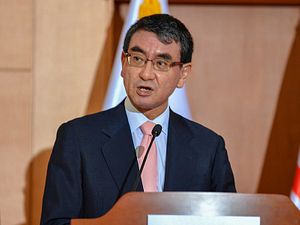The signs were there, but Tokyo’s decision last week to formally suspend deployment plans for two Aegis Ashore ballistic missile defense sites still came as something of a sudden development. According to the Japanese government, the primary reason for not proceeding with deployment at this time pertains to environmental concerns: specifically, the matter of spent boosters from Standard Missile 3 interceptor missiles potentially dropping over inhabited territory. (I joined Doyle K. Hodges over at War on the Rocks for a technical discussion on some of the pitfalls of Aegis Ashore versus sea-based Aegis solutions.)
For Japanese Prime Minister Shinzo Abe’s government, the 2017 decision to proceed with two Aegis Ashore sites appears more and more like an artifact of a bygone era, when North Korea was shocking the world with rapid qualitative advances in ballistic missile technology on what seemed like a fortnightly basis. Tokyo’s decision late that year was between purchasing the more expensive six Terminal High Altitude Area Defense (THAAD) batteries versus two somewhat cheaper Aegis Ashore sites.
Beyond the technical concerns over spent boosters, the Japanese government has been dealing with fierce local opposition to the deployment of the sites. The candidate sites in Akita and Yamaguchi prefectures weren’t too popular with locals, who had concerns that the sites would all but ensure that their homes would be high-value targets for North Korean missiles in a conflict.
The Abe government now needs to find a way forward. The North Korean ballistic missile challenge has not declined, even if the intensity of Pyongyang’s missile testing has somewhat moderated from longer-range systems to shorter-range ones. But the weapons that Tokyo worried about in 2017, including systems like the Pukguksong-2 medium-range ballistic missile, not only still exist, but have likely been mass produced by North Korea. Ballistic missile defense will likely remain part of Japan’s toolkit.
Tokyo still possesses capabilities like the Patriot Advanced Capability 3 system, but that’ll only cover so much of the threat spectrum. Ballistic missile defense systems like Aegis Ashore, THAAD, and PAC-3 are each designed, tested, and evaluated against certain types of targets; PAC-3 simply can’t do what Aegis Ashore can. For instance, the latter, had it been deployed, would have given Tokyo an exoatmospheric interception capability that for the time being will remain confined to the seven operational Aegis-capable guided missile destroyers in service with the Japanese Maritime Self-Defense Force.
Though Aegis Ashore has just been “suspended” for now, it appears likely that the procurement will be cancelled altogether in the coming years. It’s possible that Tokyo may revisit the option to procure THAAD, but cost was one factor in the Aegis Ashore suspension too. Given that the sticker price for the six THAAD batteries was greater than that for two Aegis Ashore sites back in the 2017 evaluations, it’s unlikely that Tokyo will go this way. According to Jiji Press, the Japanese government has convened officials in the Ministry of Defense and National Security Council to game out alternatives. One option could keep Aegis Ashore “afloat” — literally — on a so-called “megafloat,” Jiji Press reports. That’d bring Aegis Ashore back offshore, but not quite in the same way as the system being deployed on board a destroyer.
Part of the answer to where Japan goes from here may have to do with the investments laid out in the 2018 National Defense Program Guidelines (see page 18) on precision guided standoff weaponry. Instead of destroying North Korean missiles after launch, Tokyo can practice self-defense preemption by procuring systems like the U.S.-made the Joint Air-to-Surface Standoff Missile (JASSM) and the Long-Range Anti-Ship Missile (LRASM). These options, however, have their drawbacks. Missile defense, despite its limitations, also has an important role to play in public reassurance — an important consideration for Japanese leaders. It’s possible, too, that U.S.-Japan conversation on the possible deployment of American conventional ground-launched missiles — made possible with the 2019 demise of the 1987 Intermediate-Range Nuclear Forces Treaty — could play a role in Tokyo’s calculations.
Aegis Ashore’s fate in Japan is likely sealed (much to the relief of some in Beijing and Moscow, no doubt), but what comes next is still unclear. We should expect to learn more soon.































